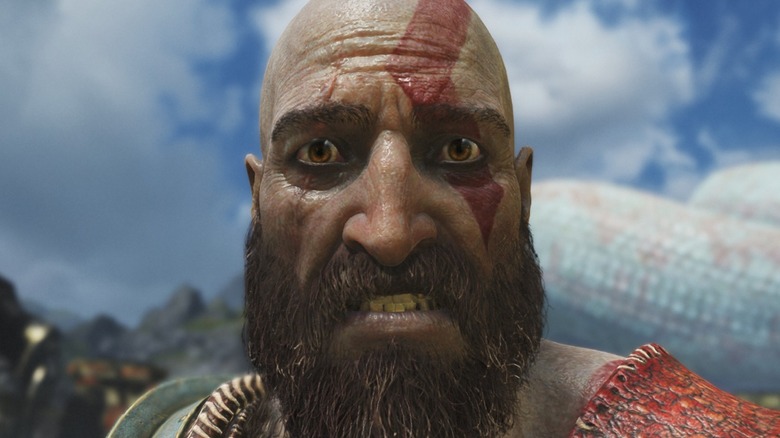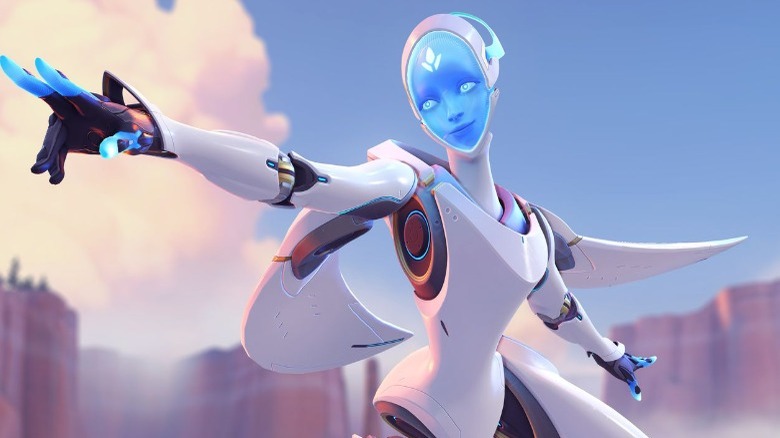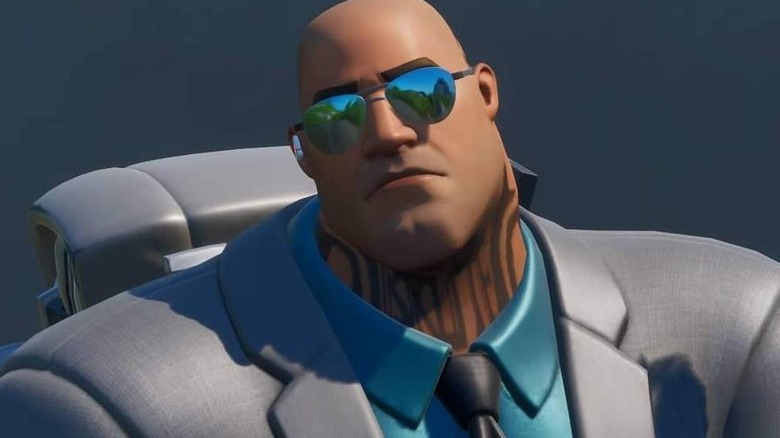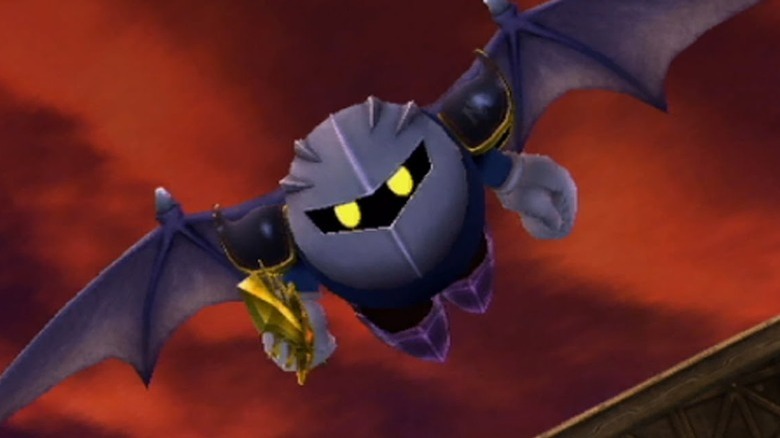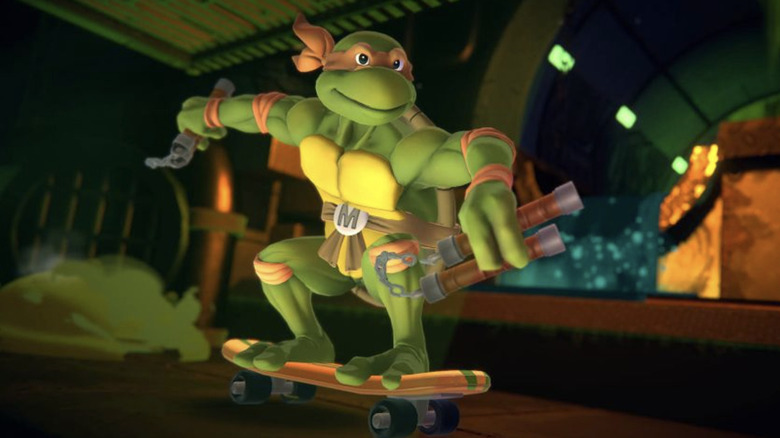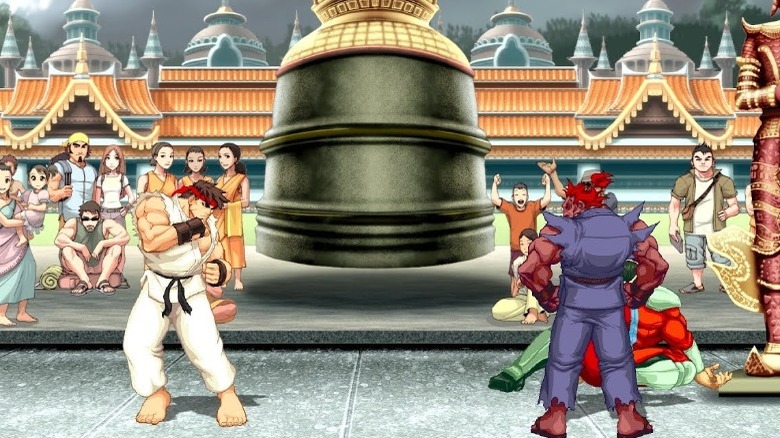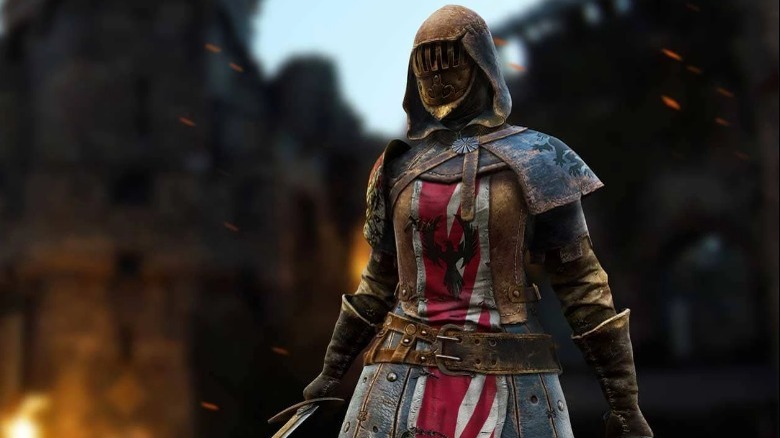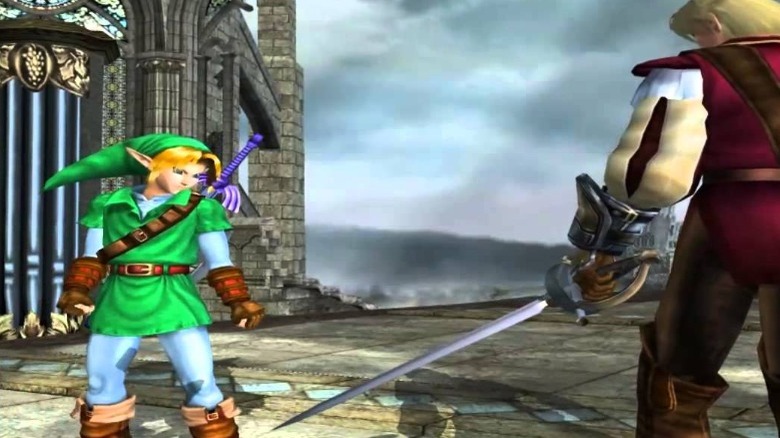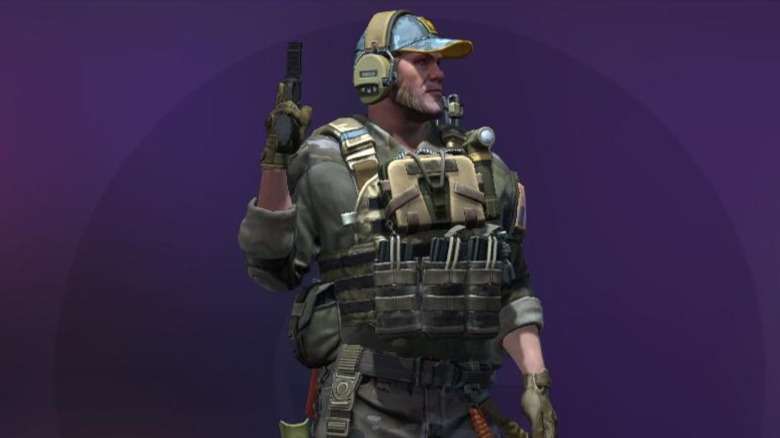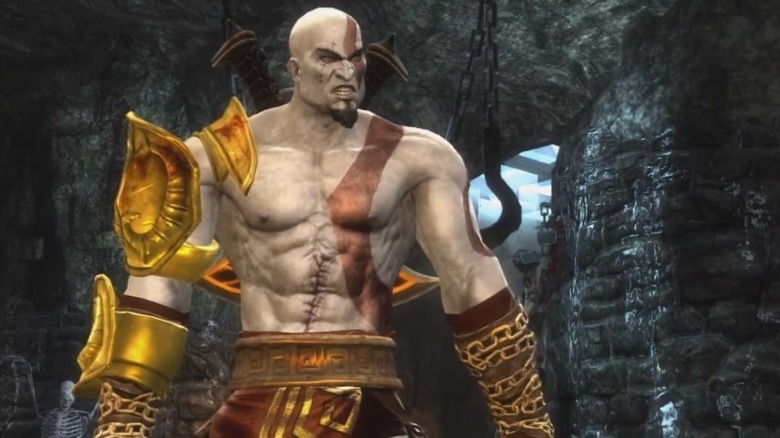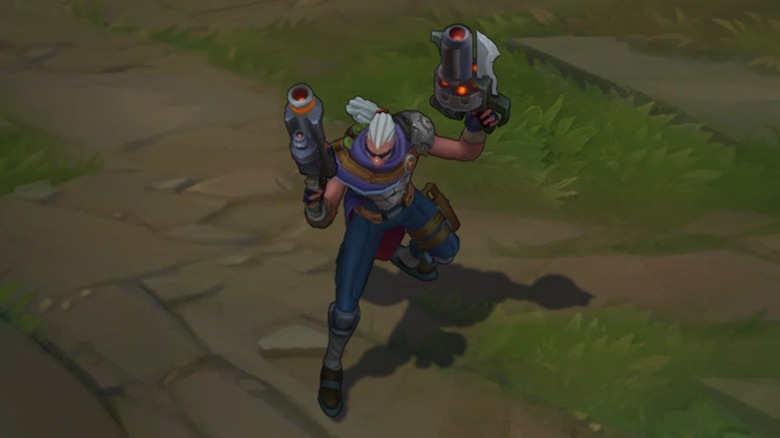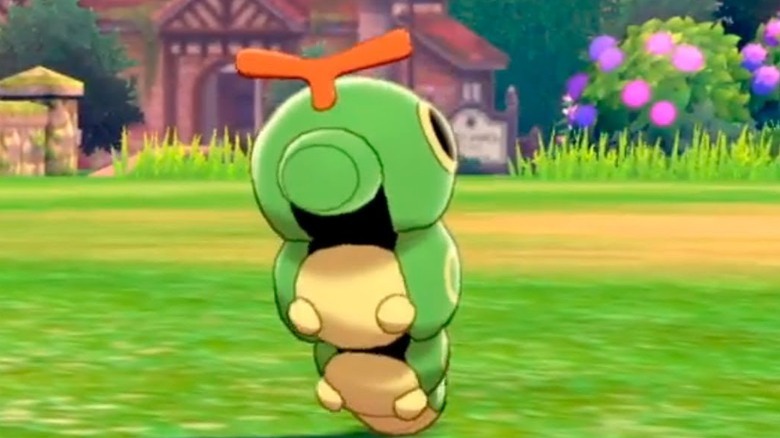The Real Reason These Game Characters Were Banned From Competition
Ever since video games were first introduced, they've fostered a competitive spirit among players. After all, even early games like "Pong" pitted players against each other in the same way that real-life sports would. The multiplayer aspect of games is often just as important as a solid single-player campaign, particularly since the advent of online gaming. It should come as no surprise that there are professional leagues and tournaments for the best gamers in the world to compete against each other.
Successful esports teams can become rich, winning millions of dollars if they manage to beat out the rest of the players in top competitions. Even Olympic legends like Usain Bolt have gotten in on the action. Everything from fighting games to battle royale titles are represented in the esports sphere, although competitors are not always given free rein to choose any character they want when taking part in ranked matches or tournaments.
In fact, there have been many video game characters over the years that have been outright banned from competitive play. Sometimes the characters are glitched and can cause problems for those taking part. Sometimes they might be unbalanced and too powerful, giving certain players an unfair advantage. Whatever the case, these characters have all faced bans at some point.
Echo - Overwatch
Blizzard released "Overwatch" in 2016, bringing the multiplayer hero shooter to PC, PlayStation 4, and Xbox One, with a Nintendo Switch version following in 2019. The game sees teams of six players battle against each other as they race to complete a series of objectives. The game features a wide pool of heroes, each with their own unique abilities and skills, and has been continually updated since its launch to add new maps and characters. While it has a casual multiplayer mode, much of the appeal of "Overwatch" comes from its competitive element, and Blizzard even runs its own official esports league.
One character who was introduced in 2020 was Echo, an advanced robot who acts as a damage hero and can glide while falling. Less than a week after she was first introduced, however, Echo was banned from a number of competitive leagues and tournaments. Blizzard also removed her from the pool rotation of heroes. This was seemingly done because she was seen as too powerful and popular (per Metro), used by a large number of players who wanted to take advantage of her unbalanced abilities. Echo was later reintroduced after some balance changes and has since been included in the official Overwatch League.
Brutus - Fortnite
"Fortnite" has become a cultural phenomenon over the last few years, bleeding into the public consciousness thanks to its incredible popularity. According to a 2022 report from Dexerto, the game still has an average of 24 million daily players almost five years after it first launched. A free-to-play battle royale game, "Fortnite" helped to popularize the genre and has led to an entire industry of clones and similar titles.
Boasting so many players, the competitive side of "Fortnite" is also a money-making machine, with the top players earning millions of dollars. So it is important that Epic Games keeps the game stable, fair, and balanced to make sure that the game remains a level playing field for everyone. After all, any glitch or issue could ruin the experience and give some players an unfair advantage.
A good example of this was a glitch that occurred in January 2022, which caused certain skins from "Chapter 2" Season 2 to emit a bright glow that would spread across the map and even slow down other players' consoles. This was an obvious issue for anyone playing, as it meant the game would not perform as intended, since certain actions would be hidden by the bright glowing orb emanating from the affected player (per Sportskeeda).
This included the Brutus skin, which was first released as part of Battle Pass Chapter 2 Season 2, among several others — prompting Epic Games to ban them until the glitch was fixed a few weeks later. The glitch also affected other character skins, such as Midas, which was also removed for a time.
Meta Knight - Super Smash Bros. Brawl
Although it is very different from most of Nintendo's successful franchises, the "Super Smash Bros." series has grown to become one of the company's most popular. Making its debut in 1999, the series essentially popularized the platform fighting genre, where the ultimate goal is to knock the opponent outside of the boundaries set in a given stage. Each entry typically features a variety of characters from Nintendo franchises and other popular gaming series, including the likes of "Super Mario," "The Legend of Zelda," "Final Fantasy," and "Street Fighter".
The third installment, "Super Smash Bros. Brawl," was released in 2008. Launched for the Wii, it was the first game in the series to feature online multiplayer, a huge step forward. It also introduced Meta Knight from the "Kirby" series, but this fighter was quickly banned from a number of competitions (per IGN). The reasoning behind this was that Meta Knight's abilities were superior to every other character, giving him the ability to essentially fly and use powerful mid-air and grounded attacks to knock opponents off the stage. This gave anyone using the character a distinct advantage and would possibly have led to every competitor using Meta Knight in tournaments.
Michelangelo - Nickelodeon All-Star Brawl
"Nickelodeon All-Star Brawl" is a platform fighter in the style of "Super Smash Bros." This 2021 release, which launched on practically every available platform, was developed by Ludosity and Fair Play Labs. Featuring a cast of playable characters from across the Nickelodeon universe, it includes the likes of Aang from "Avatar: The Last Airbender," Helga Pataki from "Hey Arnold," SpongeBob SquarePants, Nigel Thornberry from "The Wild Thornberrys," and Danny Phantom.
The game also allowed players to choose four characters from the "Teenage Mutant Ninja Turtles" franchise. But while Leonardo, April O'Neil, and Shredder had no real issues, a problem immediately became clear with Michelangelo. Digital Trends reported that this fighter had a special move that could be canceled by jumping, even when a character had used up their available jump charges. Obviously, this gave Michelangelo the ability to have an infinite number of jumps, a huge issue in a competitive platform fighter. This led to his ban from the "Nickelodeon All-Star Brawl" tournament at Super Smash Con.
Akuma - Super Street Fighter 2 Turbo
One of many iterations of "Street Fighter 2," this game was released in arcades in 1994 and to consoles a year later. While it failed to be as commercially successful as its predecessor it received positive reviews and was a hit with the competitive fighting scene during the 1990s and early 2000s. The game is still played competitively (per Esports Earnings), with tournaments still being hosted as the game approaches the 30th anniversary of its launch. Although it was similar to the other "Street Fighter" games that came before it, the title also introduced super combos and air combos.
Akuma is a hidden character who was first introduced in "Super Street Fighter 2 Turbo." The younger brother of Gouken (who was responsible for mentoring both Ryu and Ken), Akuma acts as a secret boss who is incredibly powerful and solely focused on becoming the best warrior in the world. He utilizes the dark Satsui no Hado as an energy force and has been somewhat corrupted by its evil nature (per Den of Geek).
The character has been banned from "Super Street Fighter 2 Turbo" tournaments pretty much since his introduction, mainly because he was never intended to be used in the main game and therefore wasn't balanced properly. In fact, he is significantly more powerful than any other character in the game. The fighter is essentially invincible for lengthy periods when performing certain actions, while some of his attacks don't have any lead time that would allow opponents an opportunity to block or escape from them in the usual way. The hit-box on his attacks is also larger, making it harder to avoid them.
The Peacekeeper - For Honor
Ubisoft released its highly anticipated action game "For Honor" in 2017. Unlike other fighting games, it had a new take on combat that was deeper and more complex than many players had experienced before. Set in a medieval fantasy setting, the game includes five factions and dozens of unique heroes. Each of these have their own special abilities and skillsets, significantly altering how players approach combat with each character. The goal of each match varies depending on the game mode, but they usually require competitors to complete a series of objectives or eliminate the opposing team.
The Peacekeeper is a hero class in "For Honor" that is part of the Knights faction. The character acts as an assassin, using fast attacks and agility to quickly damage enemies and avoid damage. The main issue with the fighter, as explained by Eurogamer, is that she has a light attack that can be spammed multiple times in a row. The attack is also very difficult to defend against, making it a deadly combo in multiplayer. Compared to the slower and more methodical gameplay of the rest of the heroes, the Peacekeeper stood out and was promptly banned from tournaments simply because she was too powerful and being used by too many players.
Heihachi, Link, Spawn, and Necrid - Soulcalibur 2
Namco's "Soulcalibur 2" first released in arcades in 2002, with a port for home consoles coming a year later. The sequel to the 1998 fighting game was developed by Project Soul and takes place four years after the events of its predecessor. Its story focused on a legendary and cursed weapon known as Soul Edge and the attempts of the various characters to either destroy it or claim it for themselves. Receiving widespread critical acclaim, it is often regarded as the best entry in the "Soulcalibur" series for its balanced fighting, deep story, and improved mechanics.
One of the standout features of "Soulcalibur 2" was that it included exclusive characters for each version of the game. Todd McFarlane's Spawn was added to the Xbox edition, Link to the GameCube release, and the "Tekken" character Heihachi Mishima to the PlayStation 2 version. Meanwhile, Necrid (also designed by Todd McFarlane) would appear in all three versions of the game on console. All four characters were banned from tournament play, and the reason behind this was rather simple. Because each of them was exclusive to a single version of the game, organizers did not think it was fair for players to use them, as other competitors might never have fought against them (or as them) before.
Operation Shattered Web Agent Models - Counter-Strike: Global Offensive
The "Counter-Strike" series has long been Valve's premier first-person shooter franchise, and each game has been popular in the esports scene. After years without a new game, Valve released "Counter-Strike: Global Offensive" in 2012 to rave reviews and the game has gone on to be nominated as the best esports title multiple times at The Game Awards. Like its predecessors, "CS: GO" revolves around a team of counter-terrorist operatives fighting against a group of terrorists, with popular modes revolving around attempts to rescue hostages or defuse a bomb. The game remains wildily popular, averaging hundreds of thousands of concurrent players on Steam.
Valve regularly releases new content for the game via Operation packs, such as Operation Shattered Web. The only issue with the new character models in this pack is that they had a particular green coloring that was unlike anything worn by any of the other skins in the game. This led to an issue where they could blend into the background of certain maps and become difficult to see. This is a serious issue in a game like "Counter-Strike: Global Offensive" that requires quick reflexes and the ability to spot enemies before they see you. It became such a problem that tournament organizers decided to ban custom skins being used in games and specifically stop players from using any of the character models from Operation Shattered Web.
Kratos - Mortal Kombat 9
Known as "Mortal Kombat 9" by most fans, this 2011 release acted as a soft reboot of both the franchise's story and its overall gameplay. NetherRealm Studios purposely shifted the game back to its more traditional roots, but the title did not lose any of the series' graphic gore and was banned in some countries for its violence (per GameSpot). At launch, it received widespread critical acclaim and was hailed as one of the best fighting games of modern times. "Mortal Kombat 9" went on to win a number of awards as well, including Best Fighting Game at the Golden Joystick Awards.
Kratos is one of Sony's mascots as the lead protagonist of the company's "God of War" series. This makes him a popular choice for guest appearances in other games and the Spartan warrior was included in "Mortal Kombat 9" as an exclusive character for the PlayStation version of the game. Unfortunately, as with the guest characters in "Soulcalibur 2" it is this very exclusivity that meant that Kratos could never be used in competitive tournament play. Both he and the "God of War" inspired stage were blacklisted, as those playing on Xbox would not be able to train with or against him at home, putting them at a disadvantage.
Lucian - League of Legends
Despite launching way back in 2009, "League of Legends" remains one of the most popular games in the world. It's the most-watched esport title, claiming the top spot in 2021 and beating out the likes of "Dota 2" and "Counter-Strike: Global Offensive" (per Dot Esports). It is also one of the best-paying esports, with the total tournament prize pool exceeding $7 million. The game itself sees two teams of five players battling to gain control of a map by capturing the enemy base. It features a wide range of champions, with over 157 to choose from.
Lucian was added to "League of Legends" in 2013. A Marksman class champion, he has a number of impressive abilities, such as his Lightslinger buff and Piercing Light laser attack. His usefulness in the mid-game and the fact that he is a flexible fighter made him a popular character to use. The champion is capable of dominating his lane completely and is a great choice in 1v1 battles. However, this led to the character being banned in practically every match at the League of Legends World Championship in 2020, with players opting to remove him from the pool of play rather than have to deal with him (per The Loadout).
Caterpie - Pokémon
Since its launch in 1996, the "Pokémon" series has become a behemoth in video games and other forms of entertainment. There are now countless movies, television shows, spin-off games, and merchandise, making "Pokémon" the largest entertainment franchise in the world with estimated earnings of over $100 billion. The series has also become popular in esports, with The Pokémon Company launching the Video Game Championships to allow players to more than 900 available Pokémon and battle it out in competitions.
When people think of Pokémon that might be banned from the game they will likely picture powerful Legendaries, all of whom have immense strength and impressive moves. One that would not immediately jump out is Caterpie. This worm-like Pokémon is one of the weakest creatures in the franchise, commonly encountered at low levels in many games in the series. Eventually evolving into Metapod and Butterfree, it is a Pokémon that hardly anyone would choose in battle.
And yet, Caterpie was banned from the official VGC 18 tournament, along with several other unexpected Pokémon. The reason behind this was that certain moves, including Curse and String Shot, could trigger a glitch when used in competitive mode, occasionally freezing the game and forcing the match to restart. Organizers felt this could allow players to effectively restart a battle if they were losing, so they banned Pokémon that could use those moves until the glitch was fixed.

